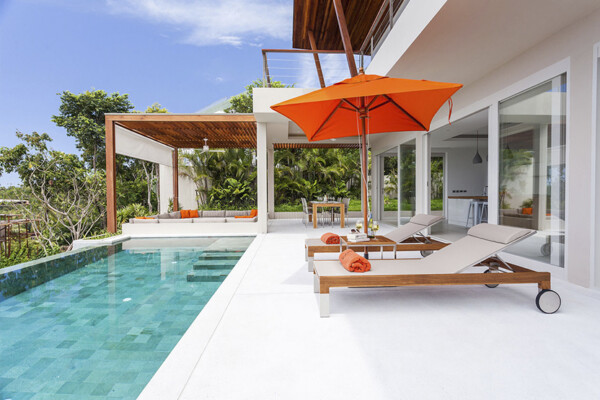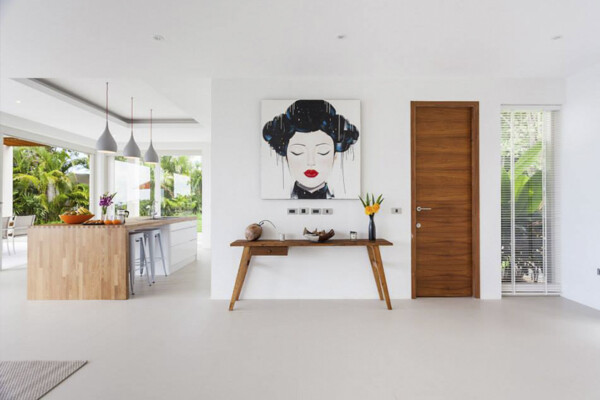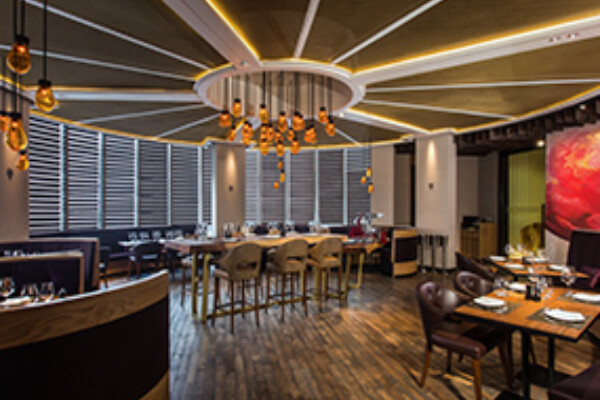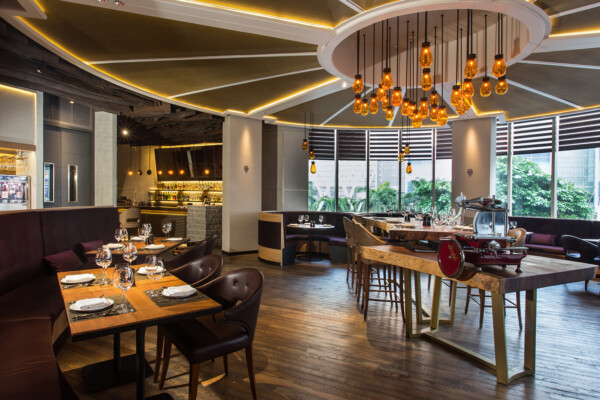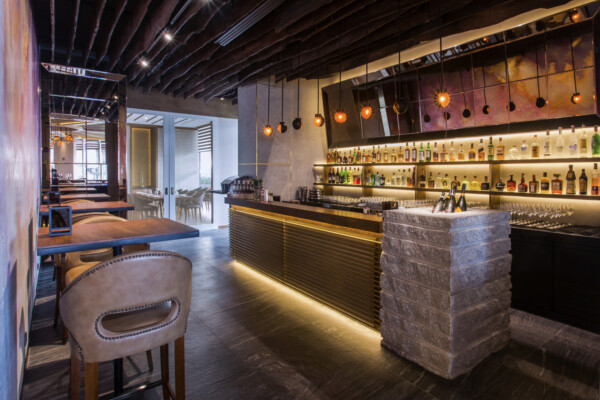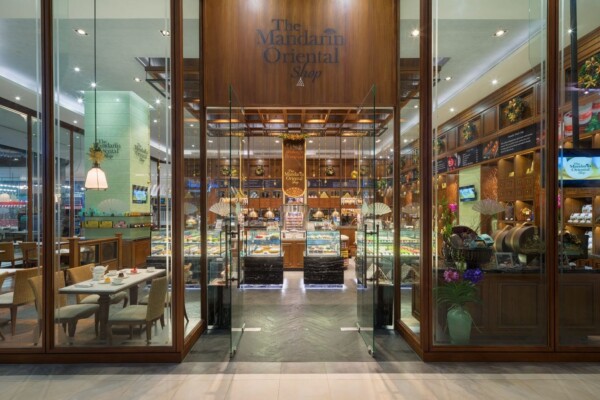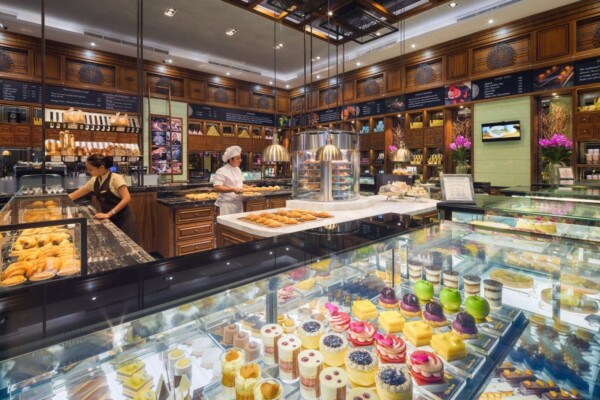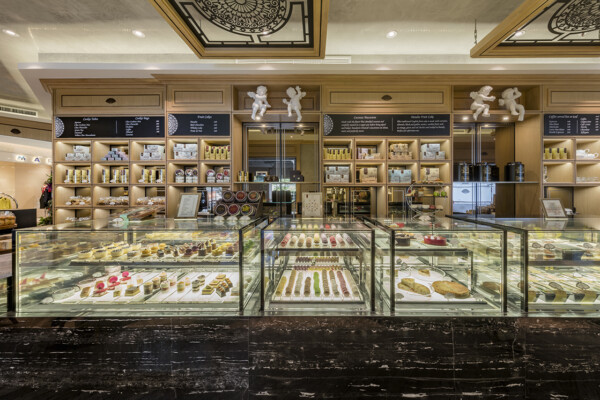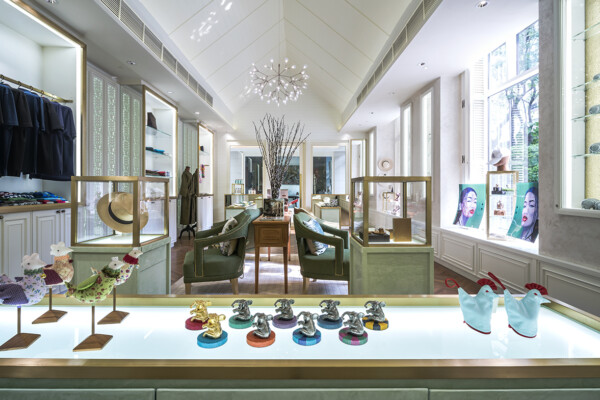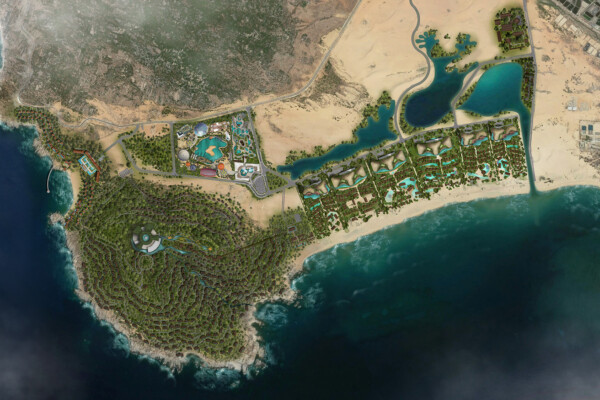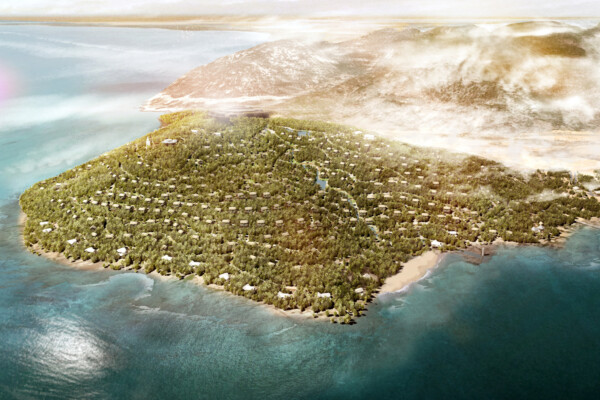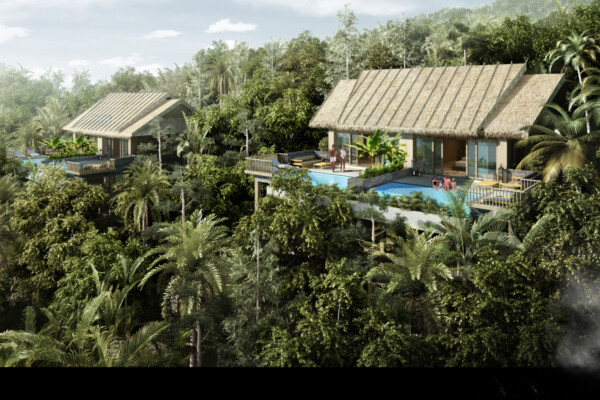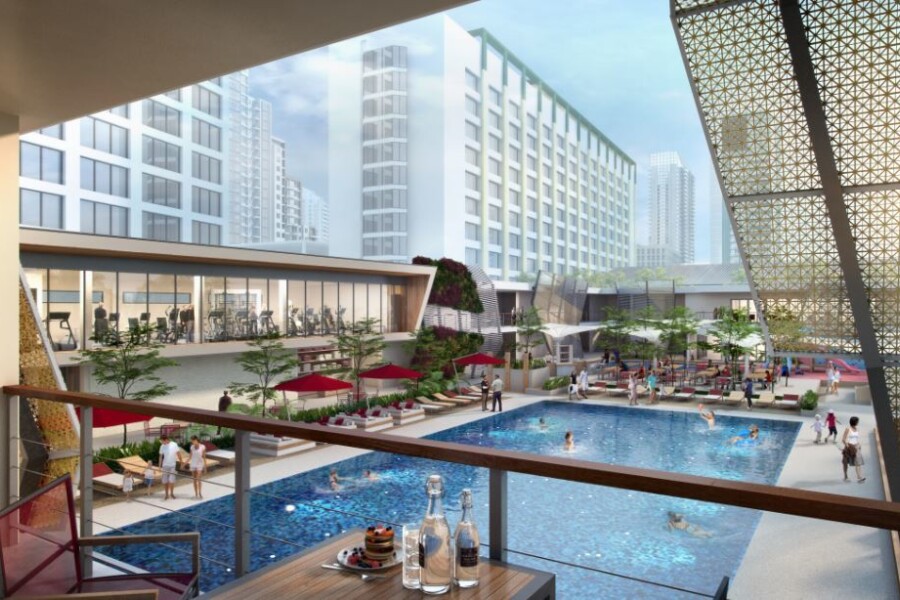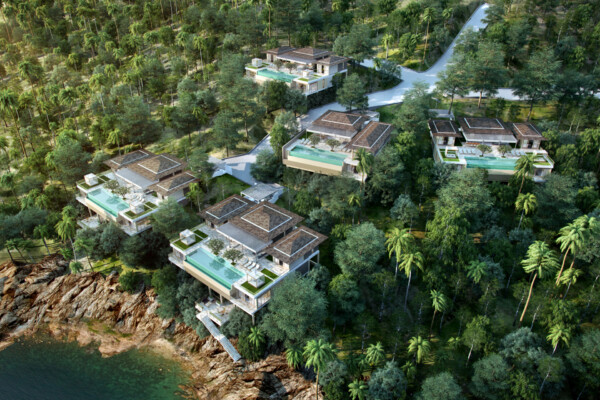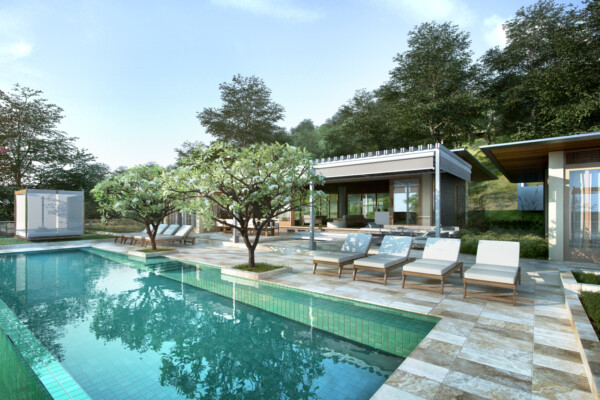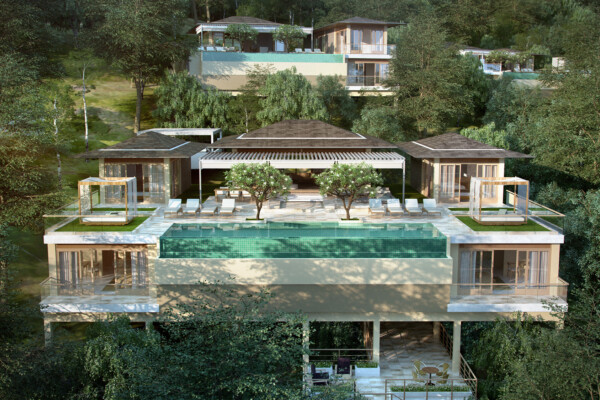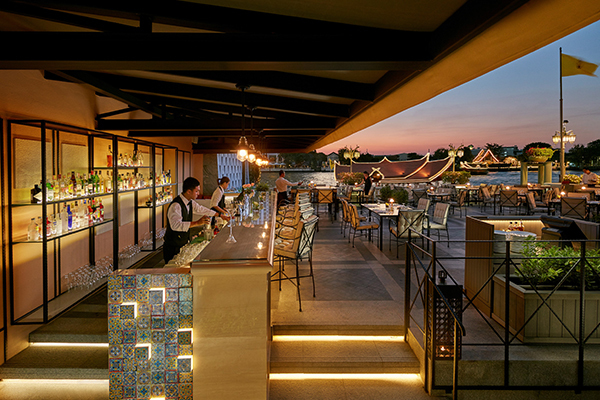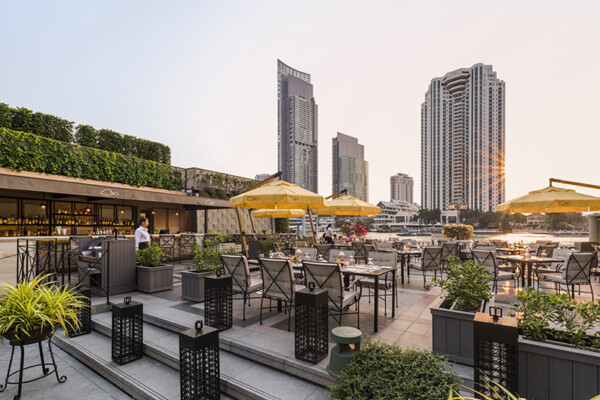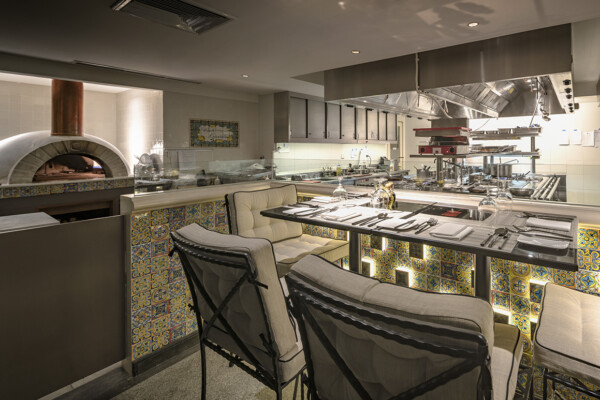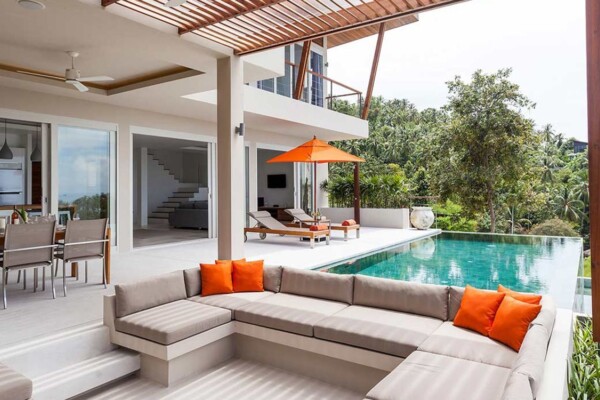
The extraordinary growth of Chapman Taylor’s Bangkok studio
Chapman Taylor’s Bangkok studio was established in 2013, and has been involved in designing a wide variety of projects for an impressive array of big-name clients. The multi-award-winning studio works across South-East Asia, as well as on some special projects for other parts of Asia, Middle East or Europe. We talk to Director Oscar Martinez about the massive scope of the Bangkok studio’s work, and about its ambition for the years ahead.
When was the Bangkok studio set up, and why?
It was set up five years ago, in 2013. It was a very natural move for Chapman Taylor, because we were already working with a number of existing Asian clients in the region and were designing projects for Bangkok, Koh Samui and Koh Phangan, as well as a few others in South-East Asia. It made sense, as the workload in Thailand increased, to run the projects closer to our clients and create a studio in Bangkok rather than flying in from the London and Shanghai studios.
At the beginning, (Chapman Taylor Director) Jon Grant established and ran the studio, winning several awards and delivering many key projects. We now number nearly 30 people, and continue expanding the teams every few months due to the increasing number of clients asking us to develop new projects for them.
Tell us about some of the key projects which followed.
The earliest projects were designs for a few luxury villas and masterplans for luxury exotic residential developments on the island of Koh Phangan – Bay Villas and Bay Apartments, which were fully designed and delivered by us for clients from Hong Kong. Another residential project was a design for high-rise towers in the north of Bangkok for Singha Estates.
We were also responsible for space planning and full interior design for the Riedel Wine Bar and Cellar, the first bar and restaurant worldwide by the renowned Riedel wine glass company. This high-profile project has won multiple awards for our interior work, which provides a unique immersive experience in a crafted environment.
Chapman Taylor has also been working over a long period with Mandarin Oriental Hotels to design multiple new areas of their landmark Bangkok hotel, and to upgrade several sections. We started by designing the hotel’s boutique shop, which sells an exclusive selection of luxury fashion accessories and decorations, before renovating and reconfiguring the hotel’s Italian restaurant, Ciao Terrazza, in line with our Amalfi Coast-inspired design concept. We also realigned and renovated the hotel spa and redesigned the bridal rooms.
We developed a completely new retail and F&B concept for Mandarin Oriental, opening the first flagship Mandarin Oriental shop in Siam Paragon, the leading shopping destination in Bangkok. The concept was later successfully expanded to three more locations, and we are currently working on others in new luxury retail developments. Our award-winning design is at the forefront of Mandarin Oriental’s retail strategy. The clients know that we understand the luxury experience, which is why we continue working together regularly to design and develop more new components of their offering.
Riedel Wine Bar and Cellar was designed to be the ultimate destination for wine lovers in South East Asia
What is Chapman Taylor’s approach to design?
We don’t do ‘standard’ projects – we are almost like a ‘boutique’ firm which always starts a design from a blank sheet, with no preconceptions about how the design should be at the end. We talk to the client about their needs and aspirations, what the client wants to accomplish, whether commercially, functionally or in terms of design, and everything which follows is guided by that.
Every client is different. Everything we do is made-to-measure, with a bespoke, context-specific design for every project we work on. It’s for this reason that clients such as Google come to us – we don’t restrict ourselves to standard office design, and we deliver something innovative, unique and fun. Google’s main offices in Thailand were designed by us with those key principles in mind.
We also like to introduce something unexpected in our designs. For example, we designed the Mandarin Oriental retail patisserie like a jewellery store with illuminated precious glass boxes, and we designed some of the office meeting rooms as if they were cafés or skytrain carriages. This element of unconformity pleases our clients, their customers and the end-users.
What changes have occurred in South-East Asian markets in recent years?
There has been a lot of very rapid change across the region, both within particular sectors and within individual companies. The market has developed very quickly into a mature level of design – clients are very well informed about the latest ideas on the international retail scene, and are looking for a high degree of differentiation and sophistication.
With the economy moving so quickly, clients are feeling the pressure to constantly provide something new and innovative to stay ahead of competitors coming into the market. This is particularly true in the retail sector – so much so that Thailand has now become a testing ground for new approaches to shopping design in Asia, with designers and developers coming from places like Beijing, Shanghai, Hong Kong and Singapore to see new ideas in action.
Developers have moved away from concentrating on individual, standalone buildings, and are now looking to develop “Lifestyle Districts” which offer a 24-hour experience. Larger-scale, mixed-use masterplans are now more popular. Chapman Taylor is currently involved in designing several large-scale projects in places like Bangkok, Yangon, Vietnam and Brunei. Developers know that they need architects who can envision a whole district, not just a single building, and we have a lot of worldwide experience doing just that.
Mui Dinh Ecopark in Vietnam recently won Best Futura Mega Project at the global MIPIM awards 2018 in Cannes
How do you differentiate Chapman Taylor in a crowded market?
Clients come to us looking for developments that are successful and stand the test of time. We have worked extensively around the world in more than 90 countries and in multiple sectors, and have key experts in each area to lead the delivery of popular and award-winning buildings.
We are also one of very few large international firms with a permanent presence in Thailand – others fly in and out but, without a permanent base here, you can see that they don’t fully understand the process and are still disconnected from the market. They can only scratch the surface of what is necessary to deliver a well-performing development from initial design to opening.
By contrast, we have grown to understand the local cultures, including systems and business practices, and we are able to fully deliver world-class concepts using our knowledge of local laws and regulations, suppliers, construction companies, products and available resources.
Our network of international studios often collaborates to deliver a project depending on specialisms, fusing global and local knowledge to achieve the best design for each project. And that’s why leading international names like Disney, Mandarin Oriental, Swire, IKEA, Riedel and Tesco come to us.
Tell us about some of the studio’s key current Thai projects
We are currently very busy with several hotel resorts, a few large masterplans and some strong retail and commercial buildings, including a large shopping centre in Bangkok. We are also working on several luxury properties on the beautiful coast.
In Bangkok, we are working on a new smart city, leading the design of smart city services with our technology partners to create a new high-tech, sustainable and ultra-modern district. This is a revolutionary project which will be a game-changer for the property market in Asia. Also in Bangkok, our design for The British Club is being realised. The British Club is a well-known luxury leisure venue in the city – we have redesigned it to attract a new generation of clientele.
We recently developed the innovative IKEA Bang Yai superstore and shopping centre, which is the largest IKEA in South-East Asia and is LEED Platinum-certified for sustainability (the roof is covered in solar panels, which actually produce more energy than we would need or than we can put back into the grid). This was a challenging project, requiring innovative design solutions such as re-thinking the shopping experience and adding more F&B spaces, more plants and more natural daylight. We created a flexible layout, allowing for the IKEA store to be entered and exited on every floor to and from the connected shopping centre.
In terms of leisure, we are designing a new flagship upscale gym concept for Fitness First, which is new to Asia, within a luxury Bangkok shopping centre. The concept we have created is tailored to the guest experience and the values of the brand. There are a number of hotel projects taking place, including a luxury hotel in a prime location in Phuket, and another hotel and luxury resort on the coast of Krabi, near a beautiful nature reserve.
What are you working on elsewhere?
Chapman Taylor is currently working throughout the South-East Asia region and beyond. We have created the largest hospitality masterplan project in the region at Mui Dinh Ecopark in eastern Vietnam. The development, which recently won “Best Futura Mega Project” at the 2018 Global MIPIM Awards, spans 728 hectares and will be a stunning coastal resort development when it is completed. The Vietnamese government has approved the plans, and the development is currently under construction, with the infrastructure progressing at a very good pace.
We are also working on creating a set of eco-islands, which are to be developed near Nha Trang. They will contain several sustainable hotels, long-term residences, a regional hub for scientific research of the local marine ecology, dedicated areas for sustainable agriculture and clean energy infrastructure.
We are developing an office tower in the centre of Yangon, the largest city in Myanmar, right beside Inya Lake. There is also a masterplan to redevelop and extend a retail-led mixed-use development in Brunei – a project which will shape a key area of the city for the next 30 to 50 years. In Malaysia, we are designing mixed-use masterplans, integrating shopping centres with hotels and offices.
The Bangkok studio is collaborating with the London and New Delhi studios on a new leading international health and wellness hotel project in India. Together with the London and Madrid studios, we are developing a new shopping centre in South Korea, and we are even working on retail developments in the UK in conjunction with the London studio. We have designed some F&B projects in Dubai, including the new lounges for the Dubai Mall cinema complex, alongside the London and Moscow studios.
Inside the famous Mandarin Oriental Hotel in Bangkok, Ciao Terrazza is a revitalised and stylish riverside restaurant
How do you see the Bangkok studio developing in the coming years?
I expect to see projects become much larger in size, with more flexible functions, fully integrated multi-use districts, and much more innovation in terms of technology integration and user experience. We also expect to bring some unconventional design ideas to other countries across the region, such as Indonesia, Cambodia and Laos – there is a huge potential for growth in those countries.
The Bangkok studio is now well-known and well-respected for its strong expertise in designing and delivering key retail, hospitality, residential and leisure developments as well as for masterplanning. The sector we are now looking at closely is infrastructure, particularly transportation projects. Countries throughout the region are developing so quickly that there is a high demand for public transport infrastructure to serve the expanding towns and cities – high-speed railways, skytrains, subways, airports, etc.
Chapman Taylor has an excellent track-record in designing transport-orientated developments and transport hubs, such as at MediaCityUK, St. Pancras, King Cross or London Bridge in the UK, and we have an excellent opportunity to help plan the future development of many of South-East Asia’s most vibrant cities.
